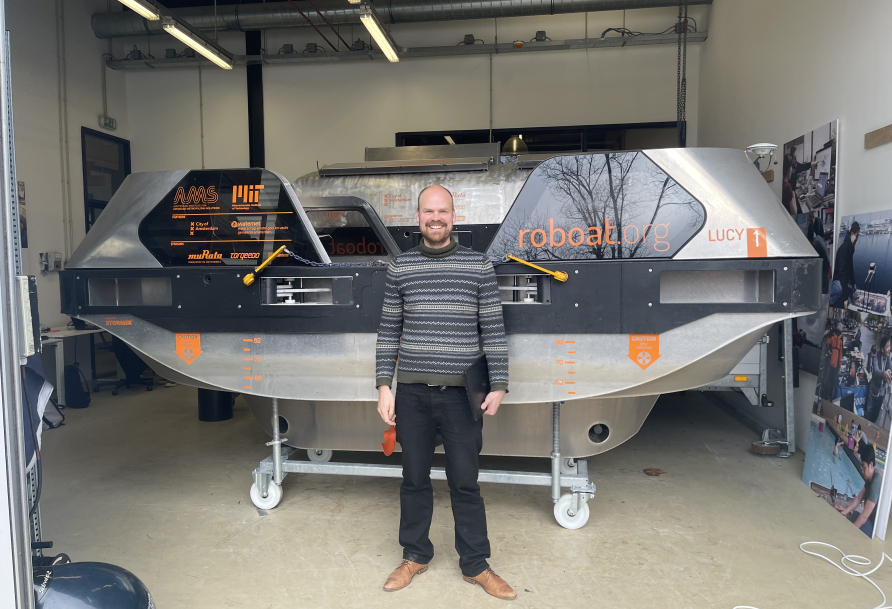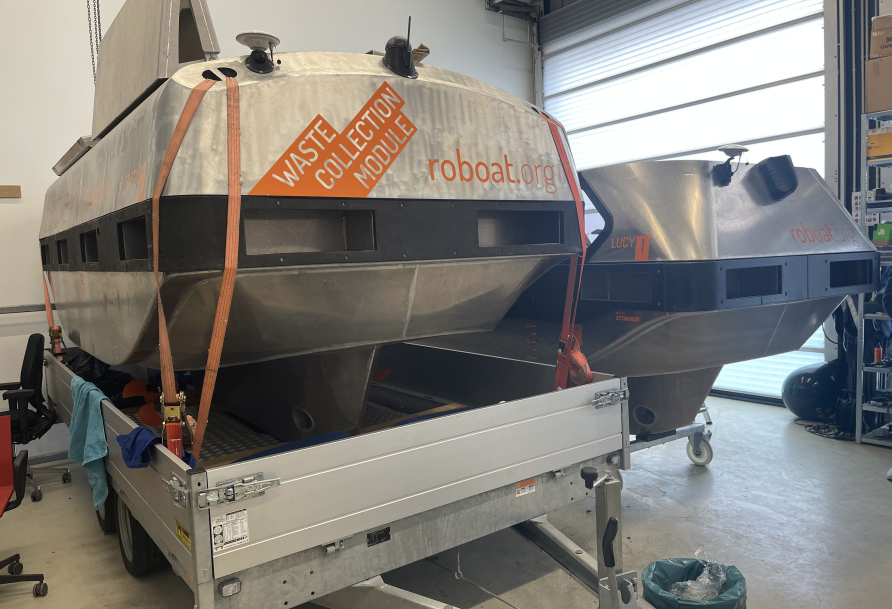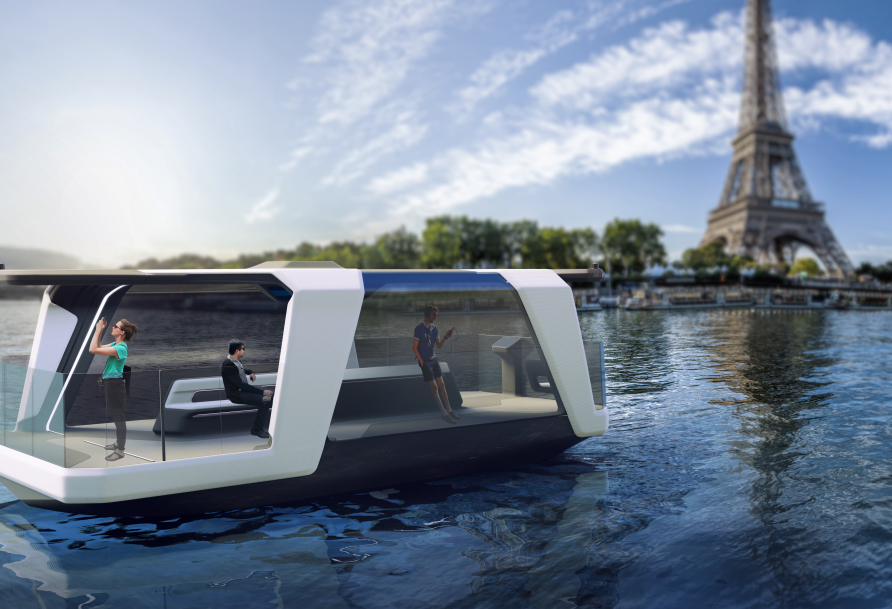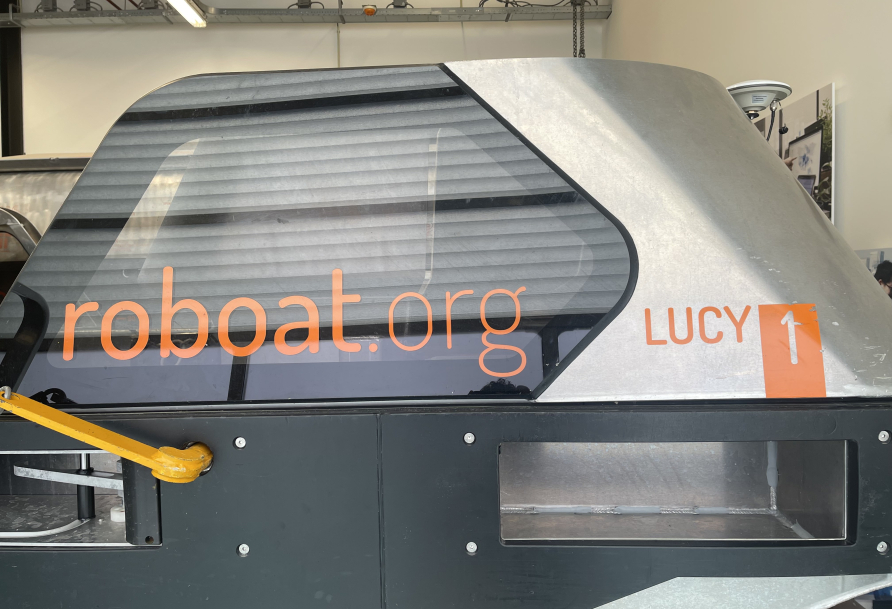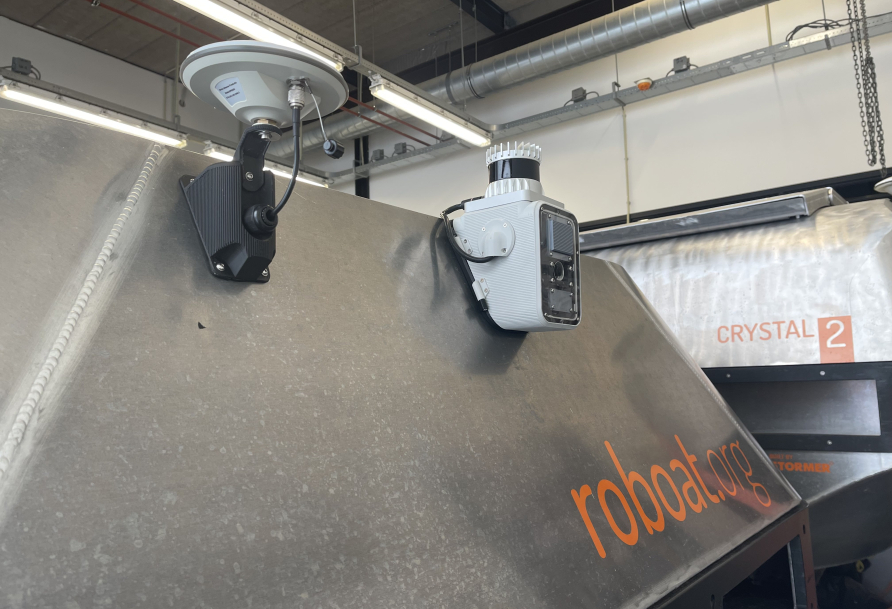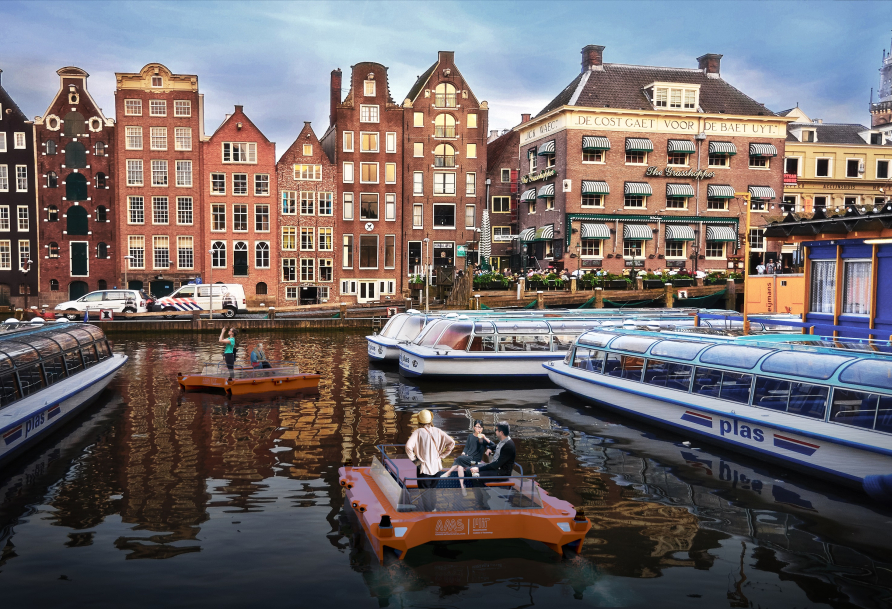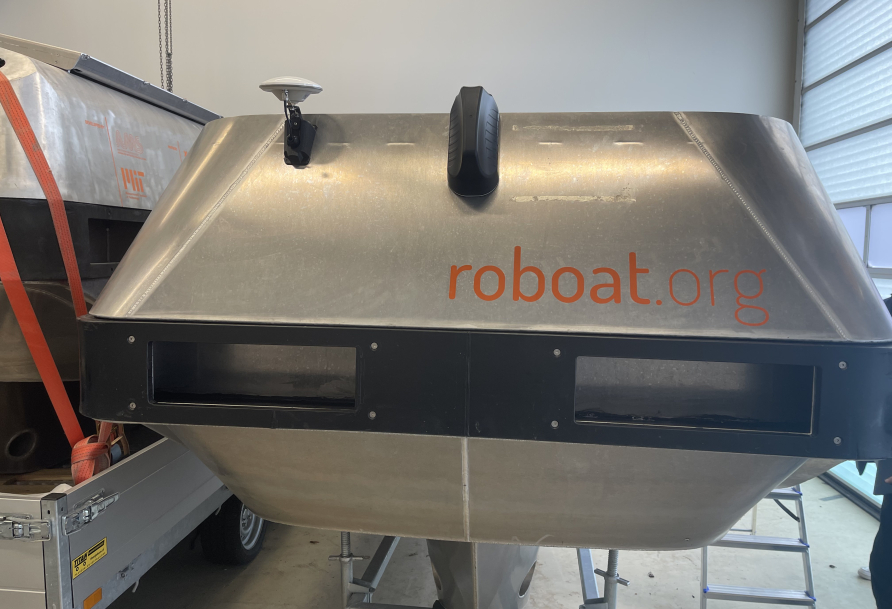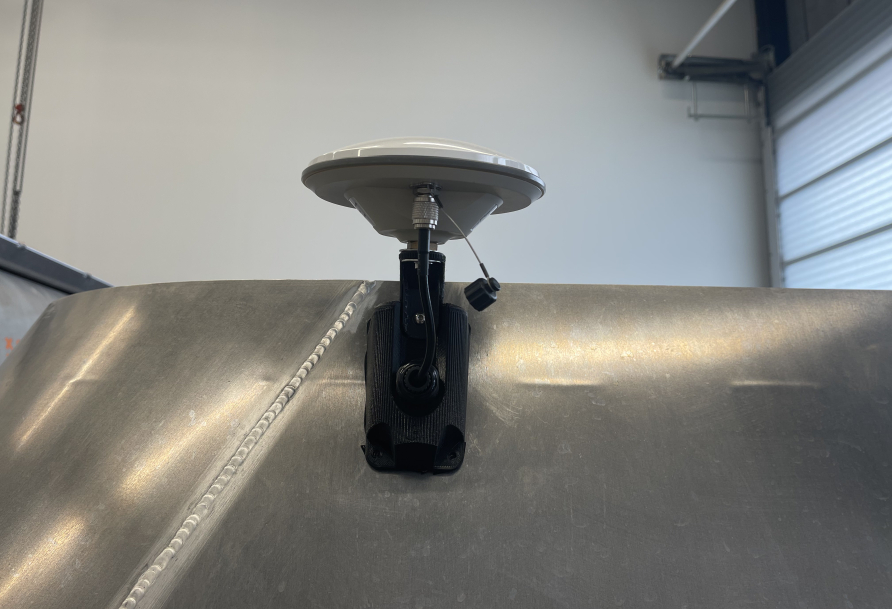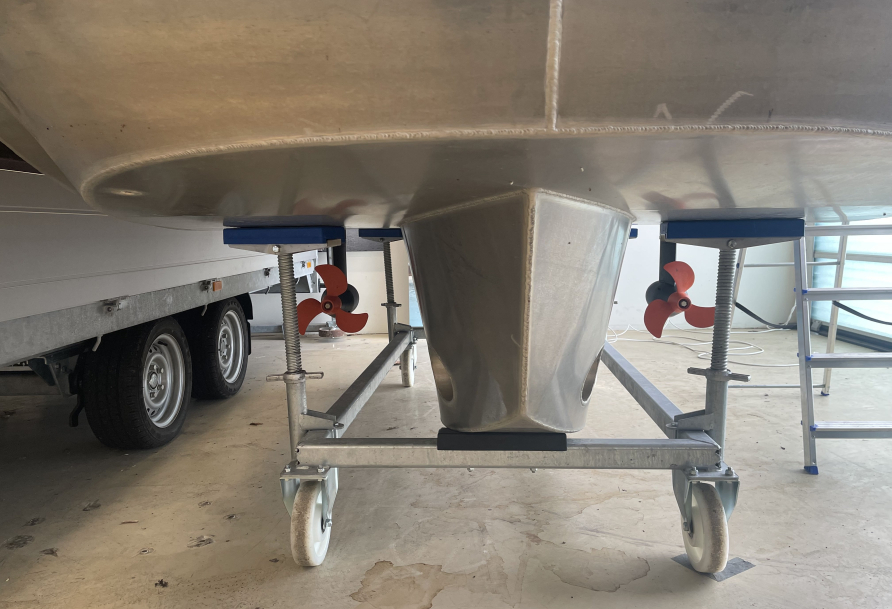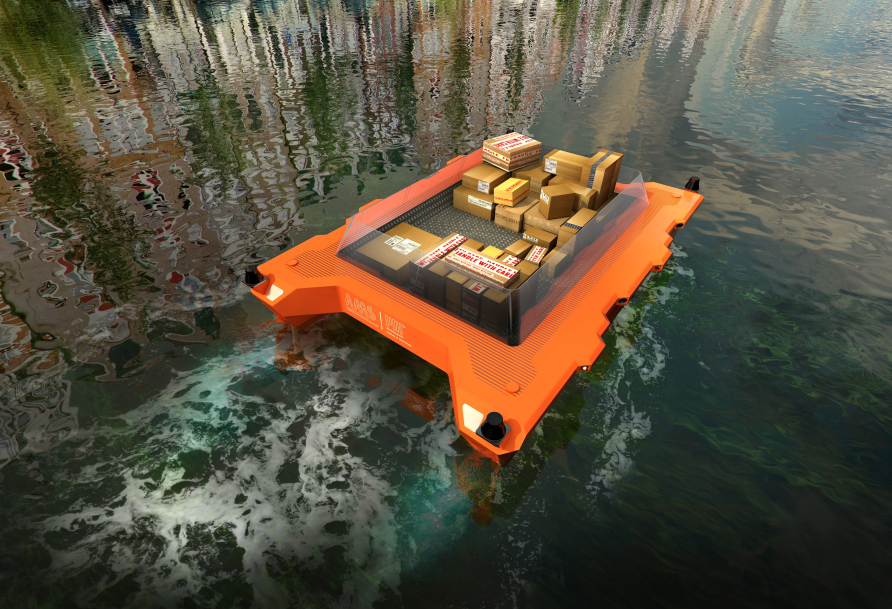
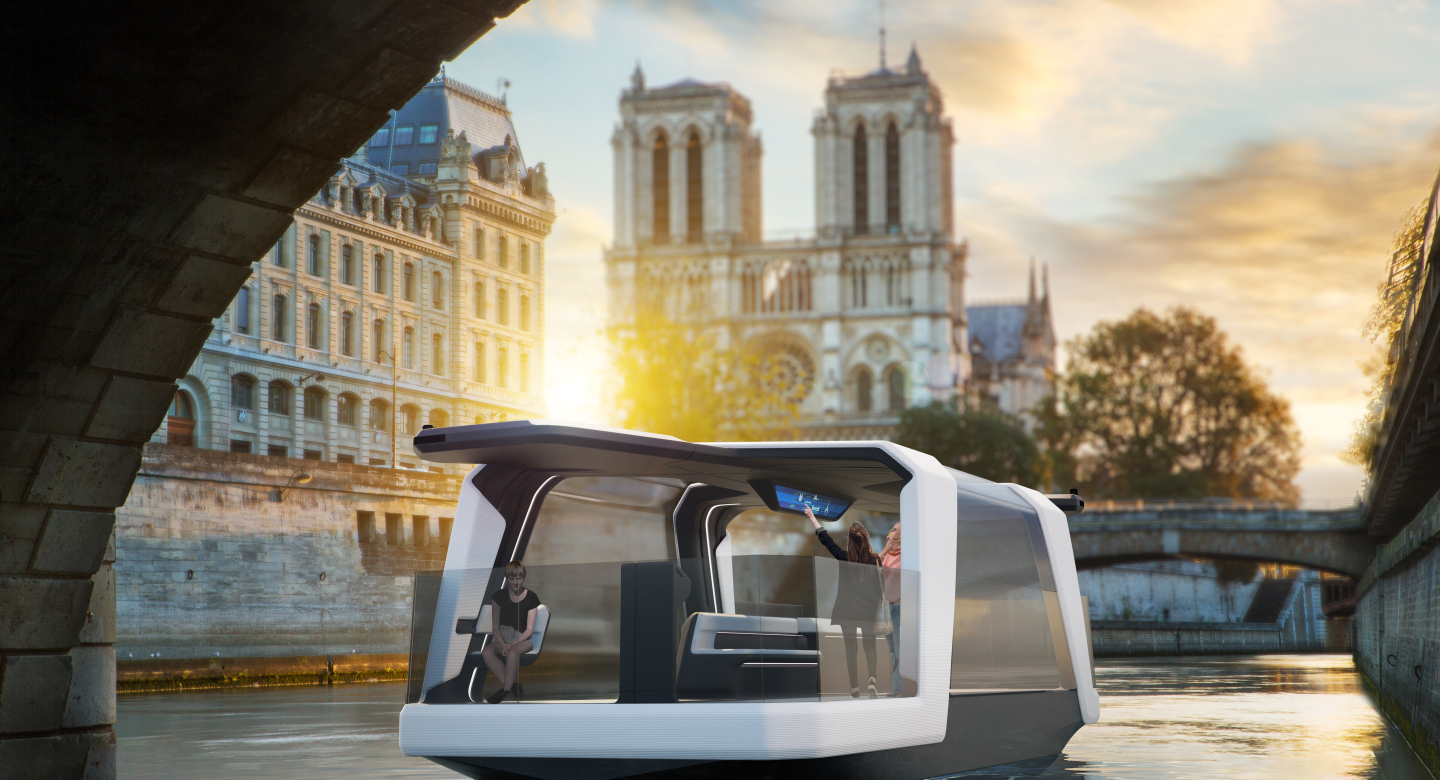
Roboat: Dutch company provides autonomous ferry solution at Olympics!
We spoke with Ynse Hendrik Deinema, the CEO of Roboat, which is a Dutch company working on self-driving technology to transform urban waterways.
In 2022, Holland Shipyards Group, SEQUANA DEVELOPPEMENT, and Roboat were designated as a winner in a national call for autonomous passenger boat projects initiated by the French inland waterway authority, Voies navigables de France.
This makes Roboat one of the Dutch innovators who have won tenders for the 2024 Olympic Games in Paris!
Let's meet Ynse to talk about Roboat's technology and how it will be applied at the Olympic Games and how it's changing the way we imagine the future of our waterways...
My name is Ynse Deinema and I'm the CEO of Roboat, which is a startup based in Amsterdam. Roboat develops technology that allows autonomous navigation for vessels operating in inland waterways. We are specifically geared towards the urban environment. So, high-complexity environments with lots of other vessels in close proximity. This is where Roboat really excels.
As for my background, I’m crazy about boats and love technology, so I enjoy working on the future of autonomous shipping.
How will Roboat be used at the Olympics? Can you tell us about the use case there?
Right now the technology for autonomous navigation on waterways is ready to be implemented on public waterways. And we can do it!
And, in terms of use cases, whether you transport people or freight is not too different from a technical point of view. What we’ve seen in the market is that there’s a high interest in enabling small or medium-sized vessels used for ferry services in the urban environment with autonomous technology. Cities are getting increasingly congested and with roads being crowded, new forms of mobility are required to open up cities again and ease congestion. There’s a high demand for innovations here.
The problem is, that if we take Amsterdam for example and look at the ferries that transport people between the central station and the north of Amsterdam, they are too large to operate on shorter lines within the city and on our canal system. Smaller boats would make more sense, but the operational costs of having a crew with expertise onboard become unfeasible. That’s been the restriction so far.
If you can take that cost out of the equation and instead have a remote operational centre where a reduced amount of personnel control multiple small boats, it's extremely beneficial to our transport system. Besides this, the scarcity of skilled skippers for boats is a problem that cities are facing globally. It's extremely difficult to find a qualified crew for a boat in cities like Amsterdam or for that matter in Paris, which is where we’re headed for the Olympics. I believe autonomy is a solution to this global challenge and will open up cities by creating new forms of transport.
How does Roboat contribute to improving transport within a city, but also transport solutions for large sporting events like the Olympics using data?
The question touches on two topics. One of them is the data collection we use to navigate the vessel itself, which is a self-learning mechanism. The more objects that are detected by the vessel the better we can train the system to detect and categorise these objects, and as a result, the better the system is at work within a specific environment.
So, it's great that we get to go to Paris and get acquainted with the context of Paris. The river Seine in Paris is different from the river IJ in Amsterdam. The core of our proposition is that we are automating the navigation of the boat. A positive bi-catch is that it's possible also to collect data about the city. For example, pollution in the water could be read through a water quality sensor on the boat, or you could even do research on the state of the waterways and whether there are cracks in the quay walls surrounding them, etc.
The data that can be collected with our vessel has a wide range of other applications and can be used for those too.
It’s super important to speak about the privacy aspect and it's something we are very aware of. This is why we place emphasis on only collecting data that is needed for the navigation of the vessel.
We do not collect any personal data and it is purely to make sure that the vessel can safely navigate from A to B and back again. Making sure we can detect floating objects and ensuring that we can execute our obstacle avoidance, so as to not bump into anything or be a risk in any way is what we collect data for. That’s the only reason we collect data and privacy is very important to us.
Why did you pick Amsterdam as your home base? The tech/ startup ecosystem, or the canals maybe?
Of course Amsterdam! Take a look at the canal system. This system has been implemented here historically to serve the needs of the city both from a mobility perspective as well as for transporting goods in and out of the city. The origin of the Roboat project was based on this: How can we optimise the usage of this existing infrastructure and why not use state-of-the-art technology to improve the concept of the vessel?
Conventional vessels are just not up for the task because as I mentioned before, there are high operating costs, a scarcity of qualified crews, and safety concerns. Amsterdam has a very elaborate water infrastructure, but it's not just Amsterdam. 70 percent of the world’s population lives near water and there are numerous cities globally that are deeply tied to their waterways. Amsterdam is a good start because if you can do it here on the canals, you can do it basically anywhere.
Also, as you pointed out, the ecosystem plays a big role and is very favourable. We are able to find very talented programmers because of the existence of a very good machine learning and artificial intelligence ecosystem here. But, also beyond Amsterdam, we have robotics talent from TU Delft and from MIT, stemming from MIT’s partnership with the Amsterdam Institute for Advanced Metropolitan Studies. All these factors help a lot.
We need a very specific type of profile to work on problems like this. And we can find people who fit that profile in the Amsterdam metropolitan area.
As I mentioned before, the tech is there and we can do it, but one has to be very aware of safety concerns. However, the legal frameworks are still geared towards a time when it was inconceivable to even think of technology like this existing. Imagine explaining it to someone in the ’70s or ’80s. Nowadays, it's opening up quickly and these developments are accelerating rapidly. Just look at the investments taking place in the automotive industry in regard to mobility transformations, which also benefit us.
What we’re witnessing currently is that authorities and legislators are aware of these innovations and the opportunities they bring along with them. They’re aware that there’s a shortage of skippers and yet a ton of new vessels and modes of transportation are needed to solve our mobility and logistic challenges. Therefore, they’re in favour of stimulating demonstrators and pilots to tackle these challenges.
In the Netherlands, there are programmes like the Netherlands Forum for Smart Shipping: SMASH! supported by the Department of Waterways and Public Works (Rijkswaterstaat). And beyond this programme, there are similar associations and groups of innovators getting together and working along with governments to accelerate the change. The Paris project is an excellent example that dares to stick their necks out a little and allow us to operate a level 4 autonomous vehicle on the river Seine! Albeit, with an operator on board who can flick a switch at any moment and shut down the autonomy system, taking manual control if required.
Indeed we are part of a global trend, in which I think there are two forces at play.
The first is a reduction in emissions and a move towards zero-emission vehicles. Our boat is electric which means that there are no local emissions and the battery can be charged using sustainable energy. Our technology fits really well in this zero-emission trend. The boat we are using in Paris is zero-emission and so are our prototypes. There’s really no reason why we would need to put a diesel engine in a boat like this. We even have conceptual designs for wirelessly charging vessels like ferries, which we are currently working on.
The next one is taking road traffic off the road and creating sustainable mobility on the water. Waterways are an existing infrastructure that’s far less invasive to use than historic roads in an inner city. It all fits into the transition that’s taking place globally to make cities less congested, more liveable, and have much smarter mobility options. And we are playing a part in this transition with Roboat.
And in the future, do you have aspirations to move beyond cities, to international goods transportation shipping perhaps?
The first part of this question is very important to me because when people think of Roboat they usually think about the boat itself. A lot of emphasis is placed on the vessel itself, with its friendly autonomous, and cutting-edge look. However, the core of our proposition is the autonomy that runs the vessel and not necessarily the vessel itself.
The core proposition of Roboat as a company is to provide autonomy as a service to ship owners, shipyards, and operators of boats. We can implement this technology on older boats as a retrofit or we can incorporate it into new builds on vessels like we’re doing now with the boat going to Paris.
To answer the part about urban environment vessels versus international transport vessels; what’s cool about Roboat and what makes it so unique is that the technology is geared towards high-complexity short-range urban environments. That’s also where we see the biggest win for autonomy at this stage because operating in a city or harbour requires a skilled crew, which as I mentioned comes with a lot of costs. Imagine taking the skipper and crew off a large cruise ship for example, and the impact is less.
Of course, however, you’re going to see this happen for large international vessels in the future too, but for right now the biggest win is making it happen in urban environments. A good analogy is the self-driving capabilities of cars on the highway versus the inner city. On a highway, it works fine, but take it to the inner city of Amsterdam and it’s lost right?
We’re trying to solve the hard problem first and then taking to open waters is much easier rather than vice versa.
I can send you a quote for one of our systems today! How you can then use this technology, depends more on your previous question about legal frameworks.
However, what we’re seeing right now is level four autonomy in demonstrator pilot settings. So, this means either time constrained or geographically constrained to certain sections of the water. As of right now, the tech is already being implemented in the water, but with a human operator still on board because of legislation.
Recently I read a book about the DARPA challenge, which is a challenge from the United States armed forces. It’s a challenge related to the development of autonomous vehicles. In its early stages innovators were asked to drive a car 210 miles through the desert and rough terrain autonomously for a certain distance. If you read that book and learn just how early-stage all that was and how long it took to get to autopilot on consumer cars today, it might put you off.
You might think, wow there’s a long road ahead of us. But, it was also just twenty years ago. And these developments are speeding up tremendously. So, imagine where we’re going to be in another twenty years from now!
Also, let’s look at the investments taking place in this space. It started with automotive, but even with Roboat when we started out in 2015, we were one of the only companies working on autonomy on water and now there are others working on similar topics. Think of the human capital and the investments flowing into this sector making all this possible.
Things are speeding up. You’re going to see autonomous vessels soon. Well, actually, you can already see them, but soon you’re going to be able to board them in Amsterdam and multiple cities around the world!
